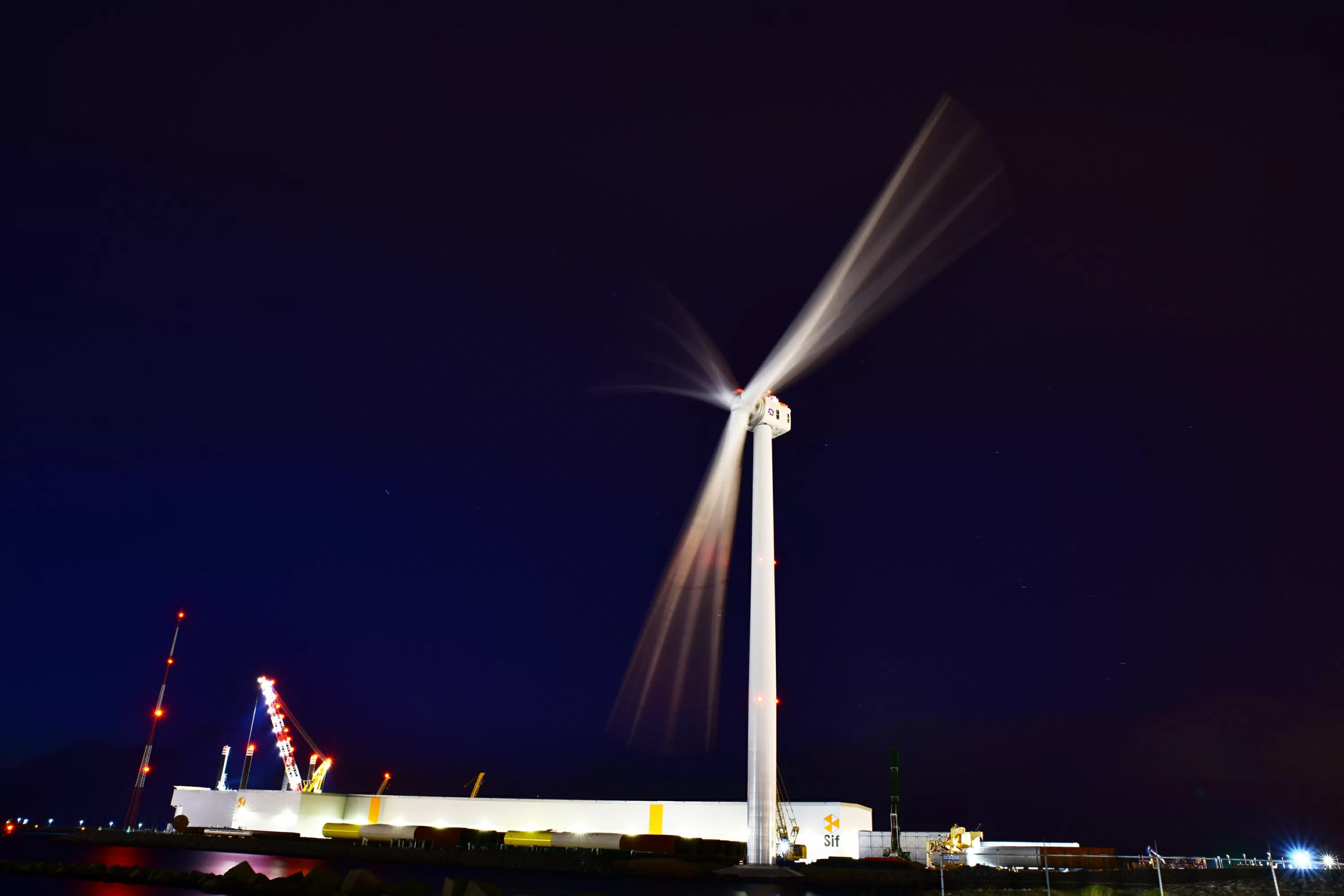

- Nieuws
-
Featured
-
Featured
- Recent
-
- Magazine
-
Featured
-
Featured
- Recent
-
- Kiosk
- Columns
- Bedrijveninfo
- Adverteren
Select Page

Bij de fabriek van Sif op de Maasvlakte gaat volgend jaar een proef van start, waarbij groene waterstof uit windstroom wordt gemaakt. De monopileproducent werkt hiervoor samen met Pondera, KCI the engineers en GE Renewable Energy.
Deze bedrijven hebben een memorandum of understanding getekend.Het AmpHytrite-project is erop gericht om ‘grip te krijgen’ op de productie van groene waterstof op zee.
Het bestaat uit drie fases. Als eerste wordt een haalbaarheidsstudie uitgevoerd naar offshore offgrid productie van groene waterstof. De tweede fase bestaat uit het ontwikkelen en bouwen van een productie-eenheid, die bij de fabriek van Sif op de Maasvlakte wordt geplaatst. Deze zal uitsluitend draaien op de door de Haliade-windturbine opgewekte stroom. Deze windturbine van GE staat op het terrein van Sif. Het plan is om er jaarlijks 750 ton groene waterstof te produceren. Het doel van de tweede fase is om tot een proof of concept te komen. De derde fase bestaat uit het opschalen van het concept, om het op zee in een windpark op volledige schaal toe te passen.
Zie ook: Sif sorteert voor op schaalvergroting monopiles
Next year a trial will start at the Sif factory on the Maasvlakte, in which green hydrogen is produced from wind power. The monopile producer is working on this together with Pondera, KCI the engineers and GE Renewable Energy.
These companies have signed a memorandum of understanding. The AmpHytrite project aims to ‘get a grip’ on the production of green hydrogen at sea.
It consists of three phases. The first is a feasibility study into offshore offgrid production of green hydrogen. The second phase consists of developing and building a production unit that will be placed near the Sif factory on the Maasvlakte. This will run exclusively on the power generated by the Haliade wind turbine. This GE wind turbine is located on the Sif site. The plan is to produce 750 tons of green hydrogen a year. The aim of the second phase is to arrive at a proof of concept. The third phase consists of scaling up the concept in order to apply it on a full scale in a wind farm at sea.